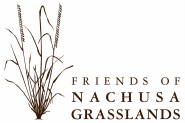Mint Family (Lamiaceae) |
Muskroot Family (Adoxaceae) |
wild bergamotMonarda fistulosa
Insect oasis As in all showy, scented flowers with lots of nectar they attract many species of butterflies, bees, moths, and other insects to pollinate the flower, allowing seeds to be produced. Hummingbirds will also take nectar and transfer pollen. Certain bees “cheat” and cut a hole in the base of the flower to get at the nectar without pollinating it. A cup of tea anyone? This common mint on our prairies can, as most mints, be used in teas or to flavor other foods. Scientific name origin The common name, bergamot, got its name because the smell of crushed leaves was similar to a citrus grown in Europe called bergamot orange (from a town nearby, Bergamo). It is also called bee balm. The word Monarda is honoring Dr. Nicolas Monardes of Italian descent living in Spain who wrote the first herbal of American plants in 1577. He had a garden full of them though he never left Spain. The specific name fistulosa is Latin meaning “pipe or tube” perhaps from the flowers or the hollow stem. |
elderberrySambucus canadensis
Berry good! Elderberry is famous for the fruits being made into wine or added to other fruits for jelly or pie. The flowers flavor syrups and unopened flower buds have been pickled as substitutes for capers. Folk medicine traditions have suggested other uses. Do not eat the berries raw, for they contain toxins! This beautiful white flowering shrub can be very common and spreading. Note the interesting pinnately compound leaves growing opposite on the warty-barked stems. Beetles and bees can be attracted to the flowers but not as many species as other flowers. Scientific name origin Sambucus is Latin for elderberry. |
